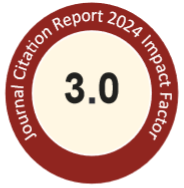Abstract
Arsenic speciation in fish samples on the market was analyzed using gradient anion exchange high performance liquid chromatography (HPLC) with inductively coupled plasma mass spectrometry (ICPMS) detection. Freeze-dried samples were extracted by methanol and water mixture (8:2 v/ v) with a high-speed Soxhlet system; the concentration of arsenobetaine (AsB), dimethylarsinic acid (DMAA), monomethylarsonic acid (MMAA), arsenate (As(V)) and arsenite (As(III)) in the extract were then determined using HPLC-ICPMS. The method for determining arsenobetaine concentration was confirmed using standard reference material (SRM) of BCR 627 (tuna fish) and DORM-2 (dogfish muscle); recovery rates were 95 and 90%, respectively. The arsenic compounds in 60 market-ready fish muscle samples were investigated. The predominant arsenic compound found in samples was AsB. Arsenate was detected in low concentrations (ranged in 0.02-0.34 mg/kg As for fresh weight), whereas DMAA, MMAA and arsenite content were undetectable. Average AsB content in cephalopods, small fish and large fish were 5.42, 1.57 and 1.54 mg/kg As (fresh weight), respectively. The weekly intake of As was calculated based on the consumption of fish by Taiwanese residents. The calculated results demonstrated that the intake is 30.6 μg/kg (total As) body weight/ week, higher than the acceptable weekly intake of 15 μg/kg body weight/week for inorganic arsenic that was suggested by WHO. However, around 87% of As in fish muscle was AsB. AsB is non-toxic and non-carcinogenic to humans, and is rapidly excreted after ingestion. Therefore, intake of fish muscle is low risk based on investigation results.
Recommended Citation
Lin, H.-T.; Chen, S.-W.; Shen, C.-J.; and Chu, C.
(2008)
"Arsenic speciation in fish on the market,"
Journal of Food and Drug Analysis: Vol. 16
:
Iss.
4
, Article 8.
Available at: https://doi.org/10.38212/2224-6614.2343

